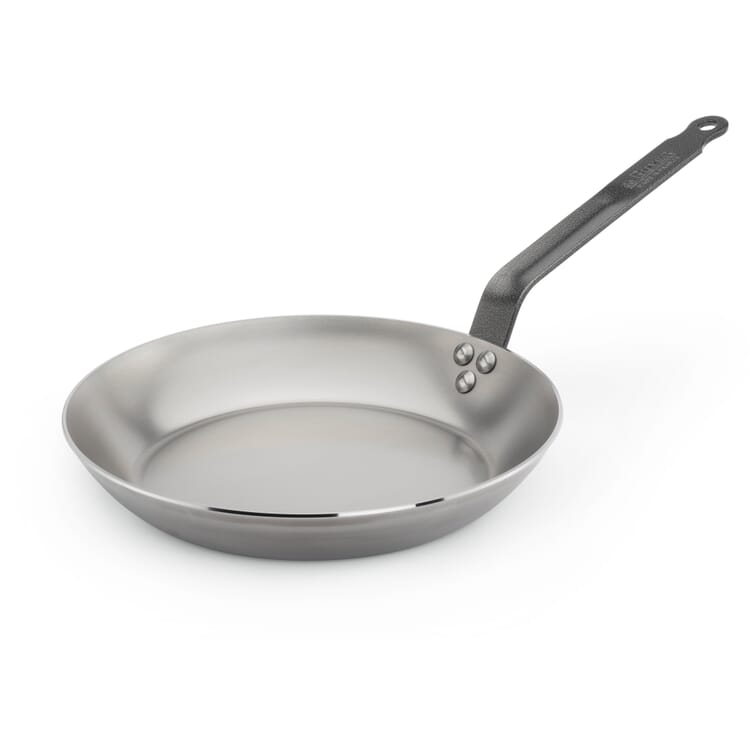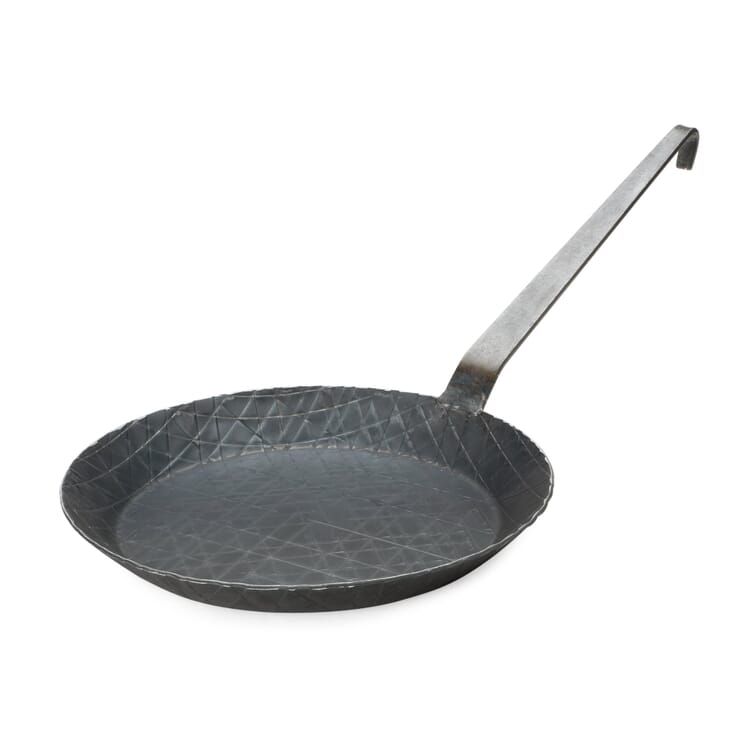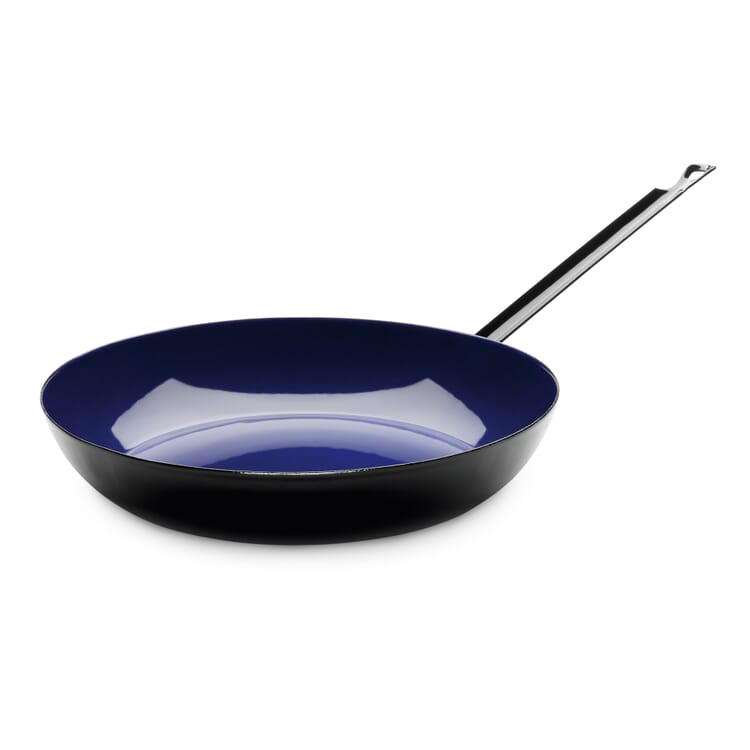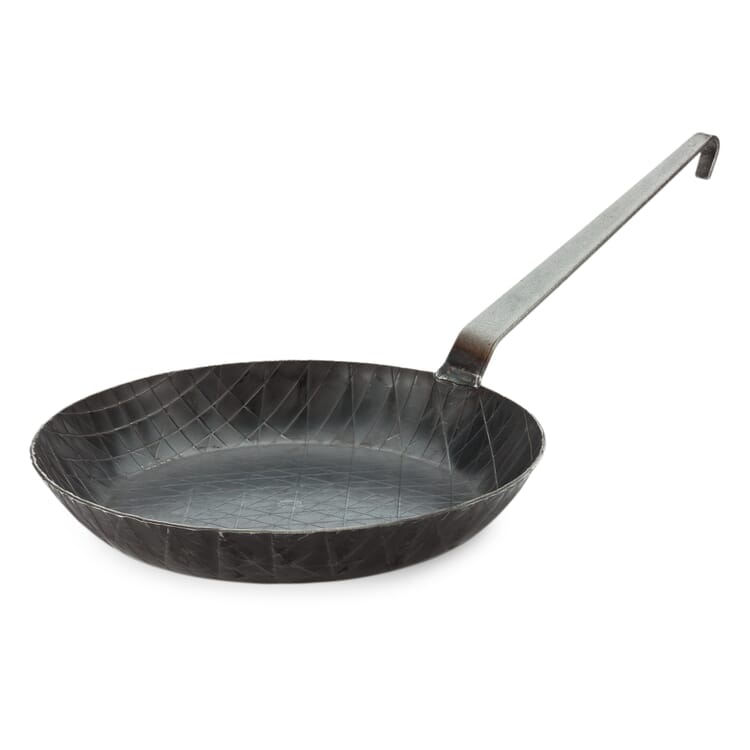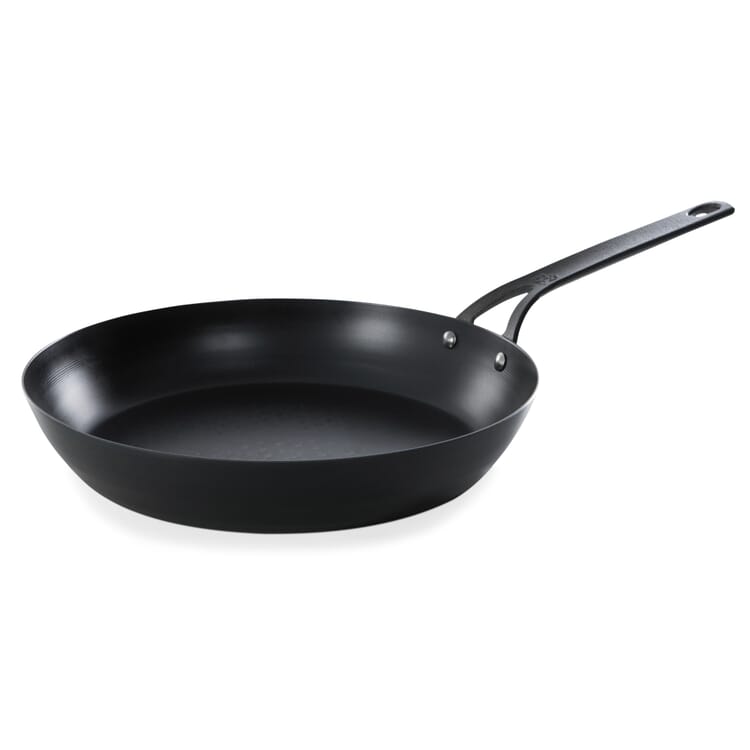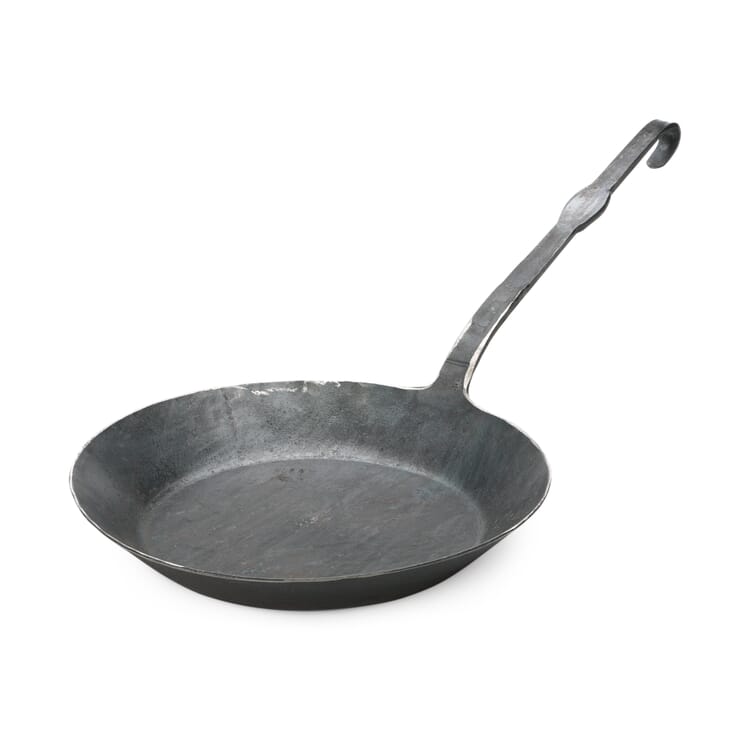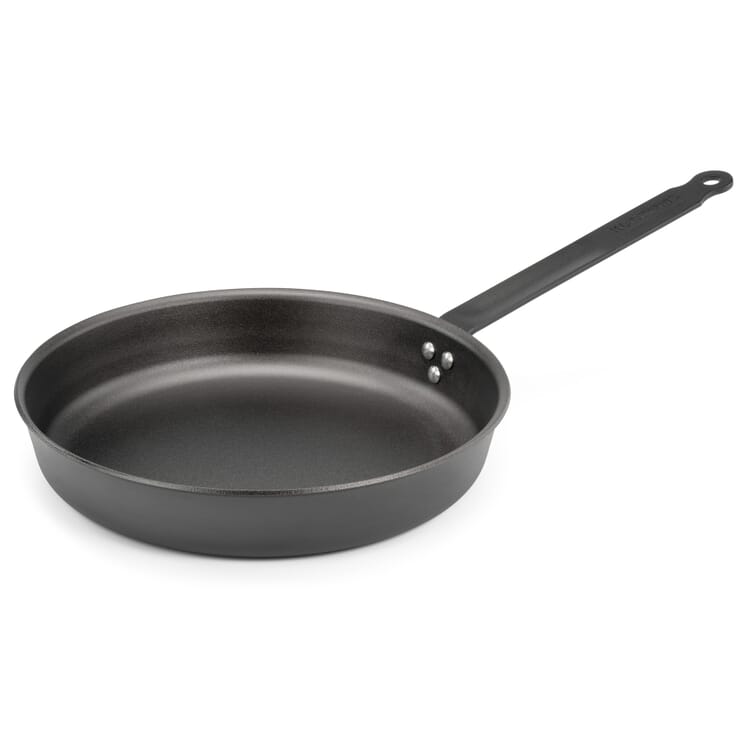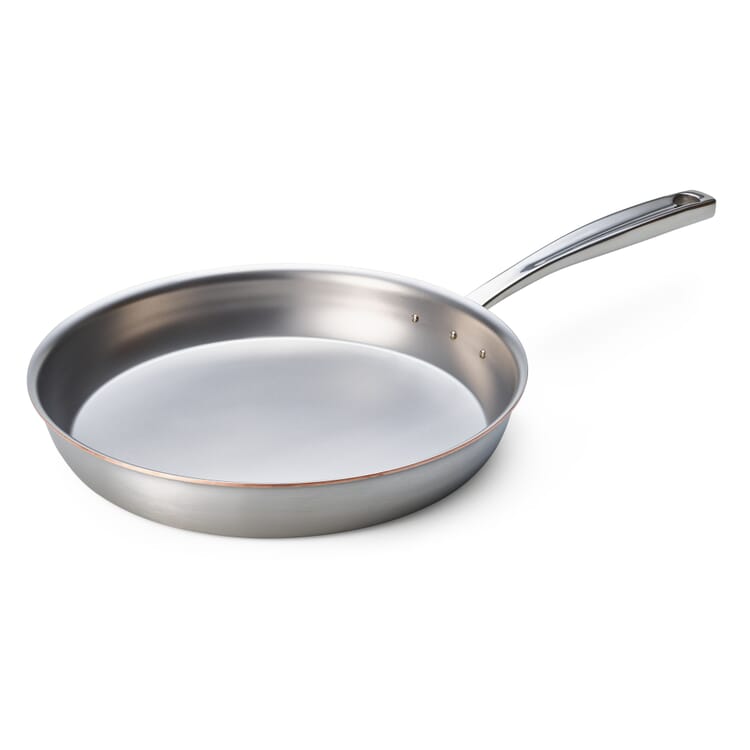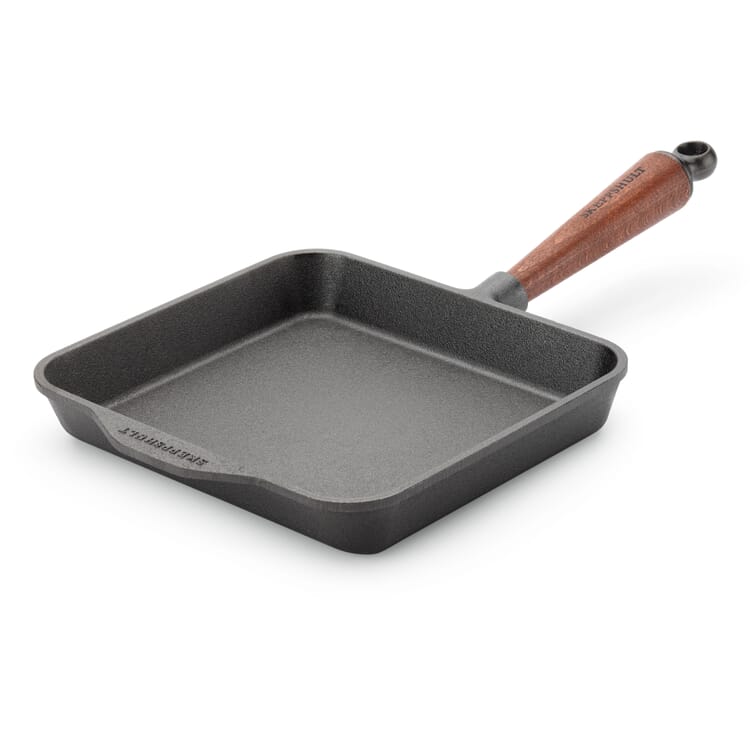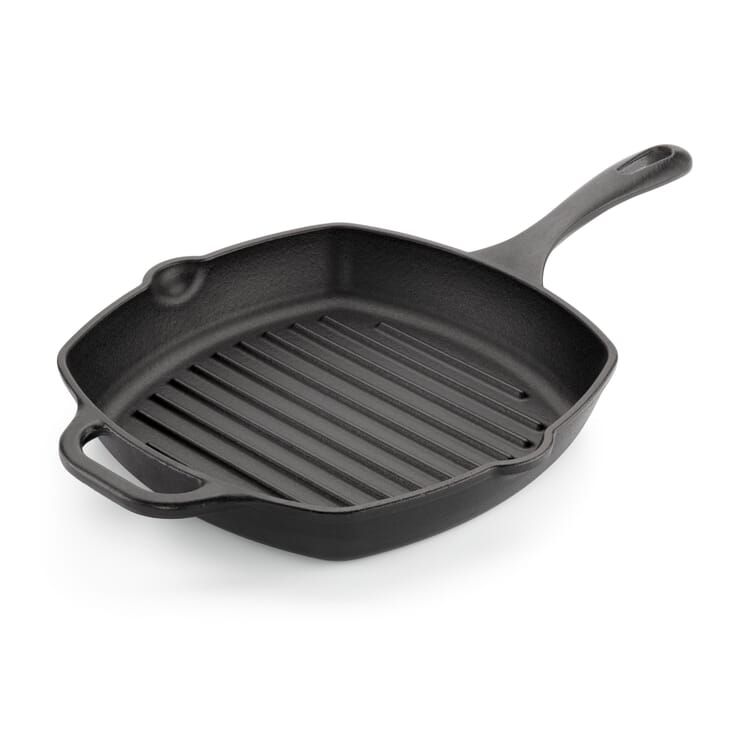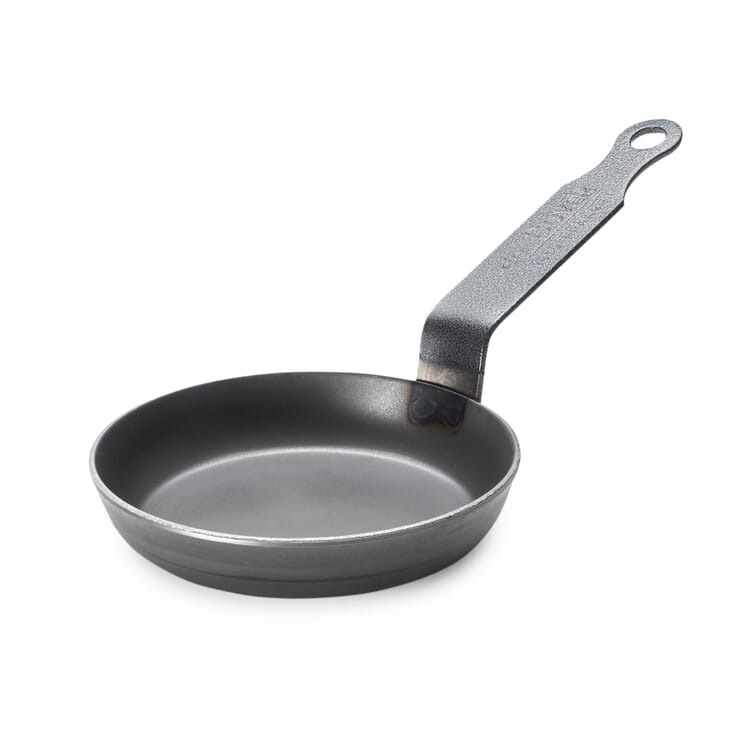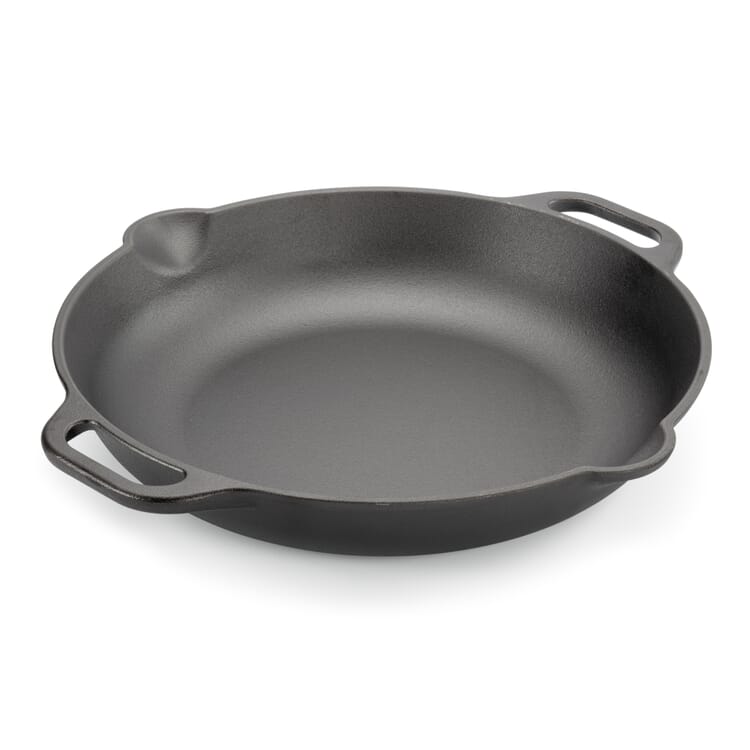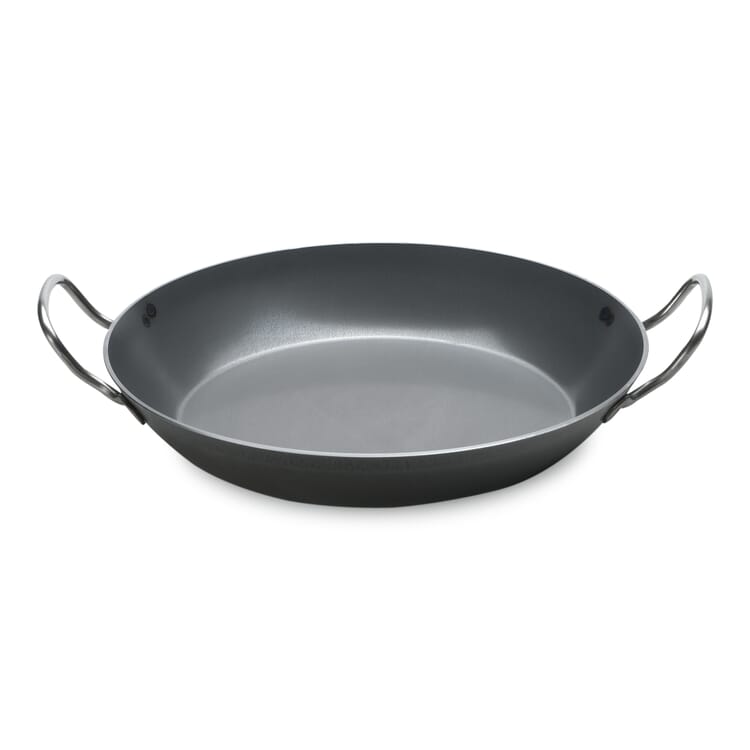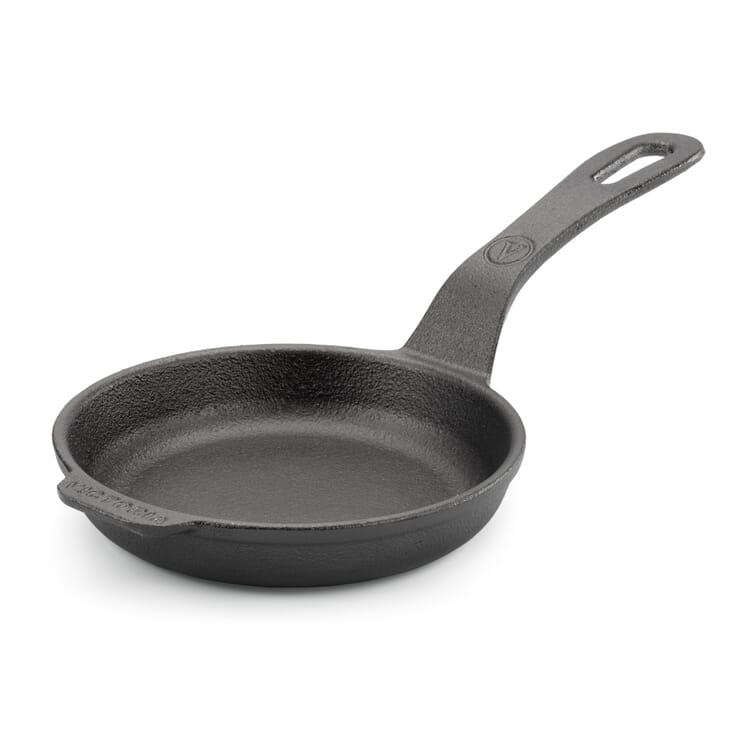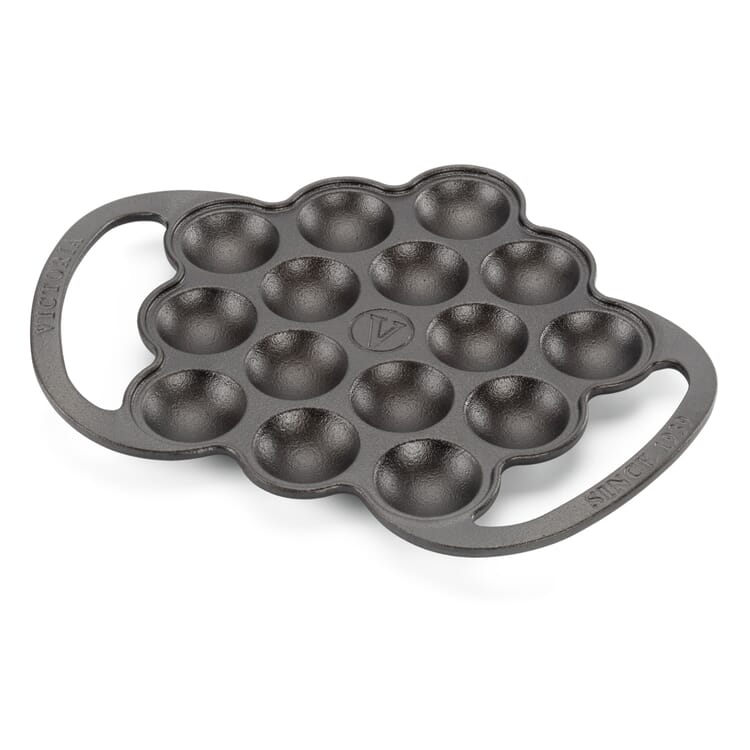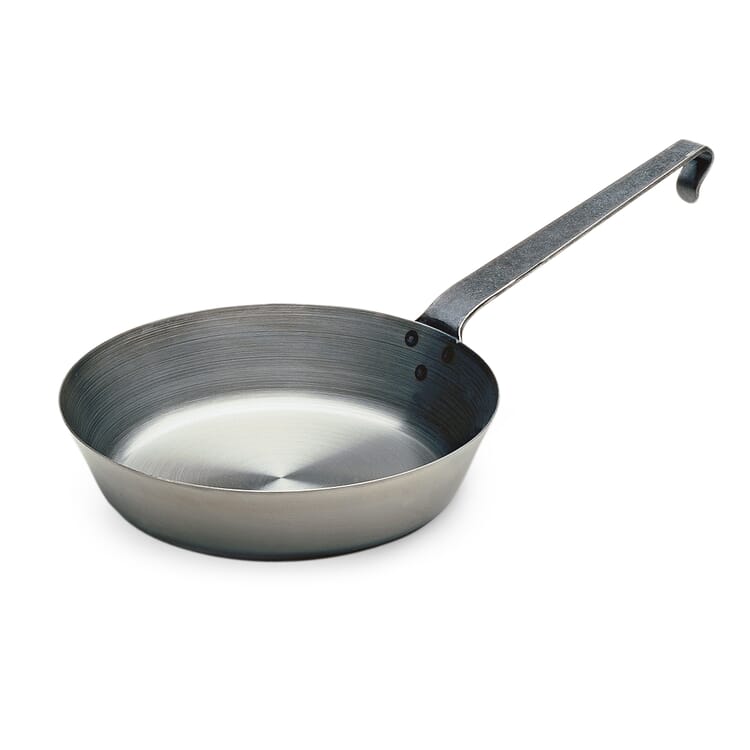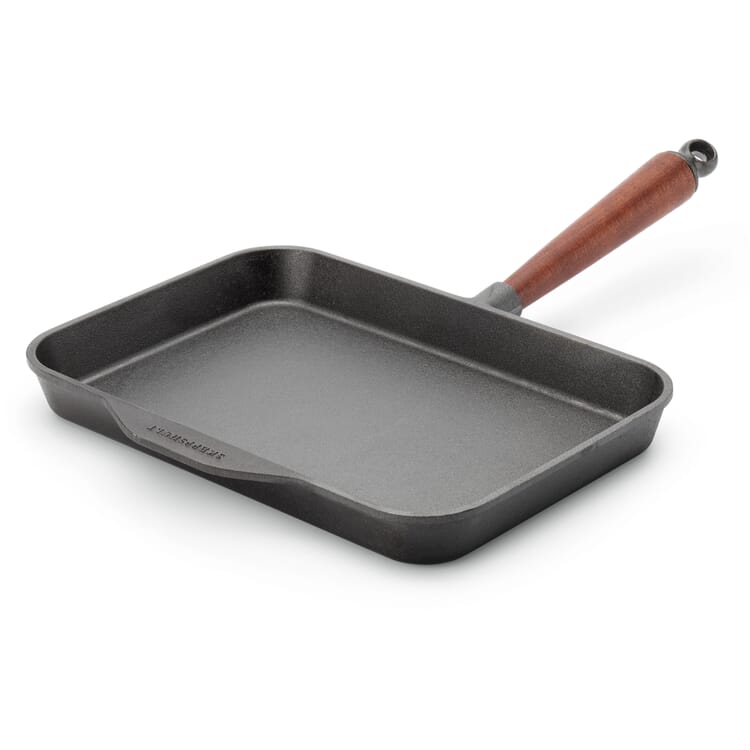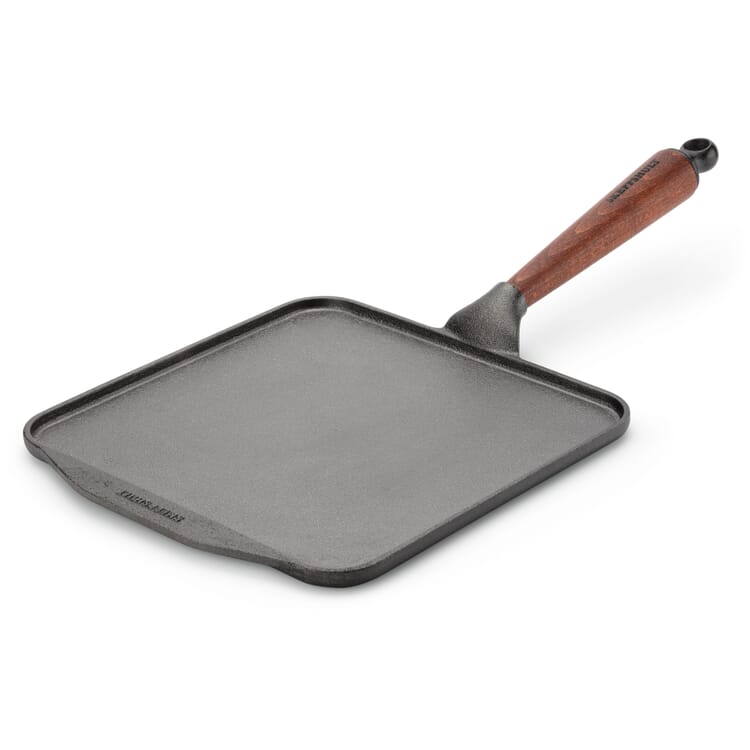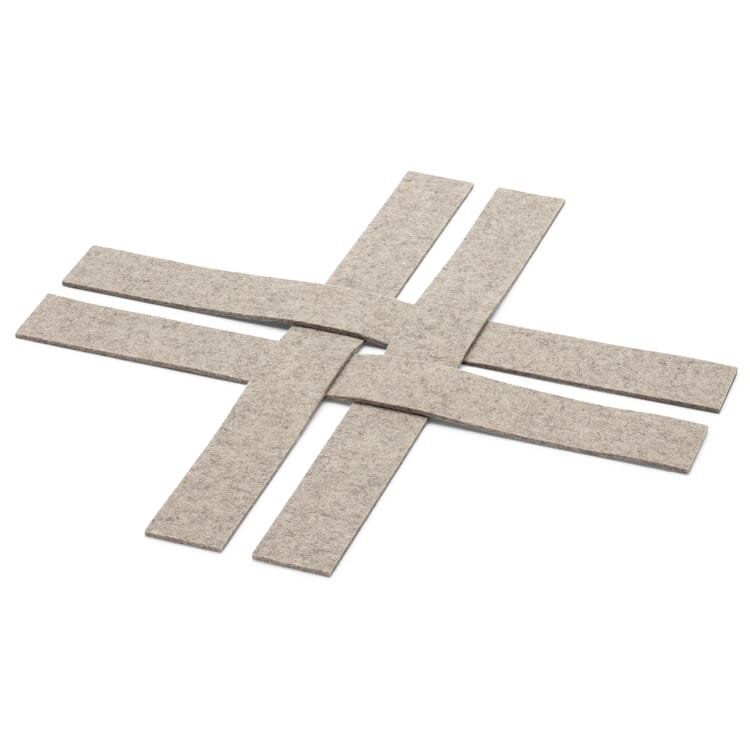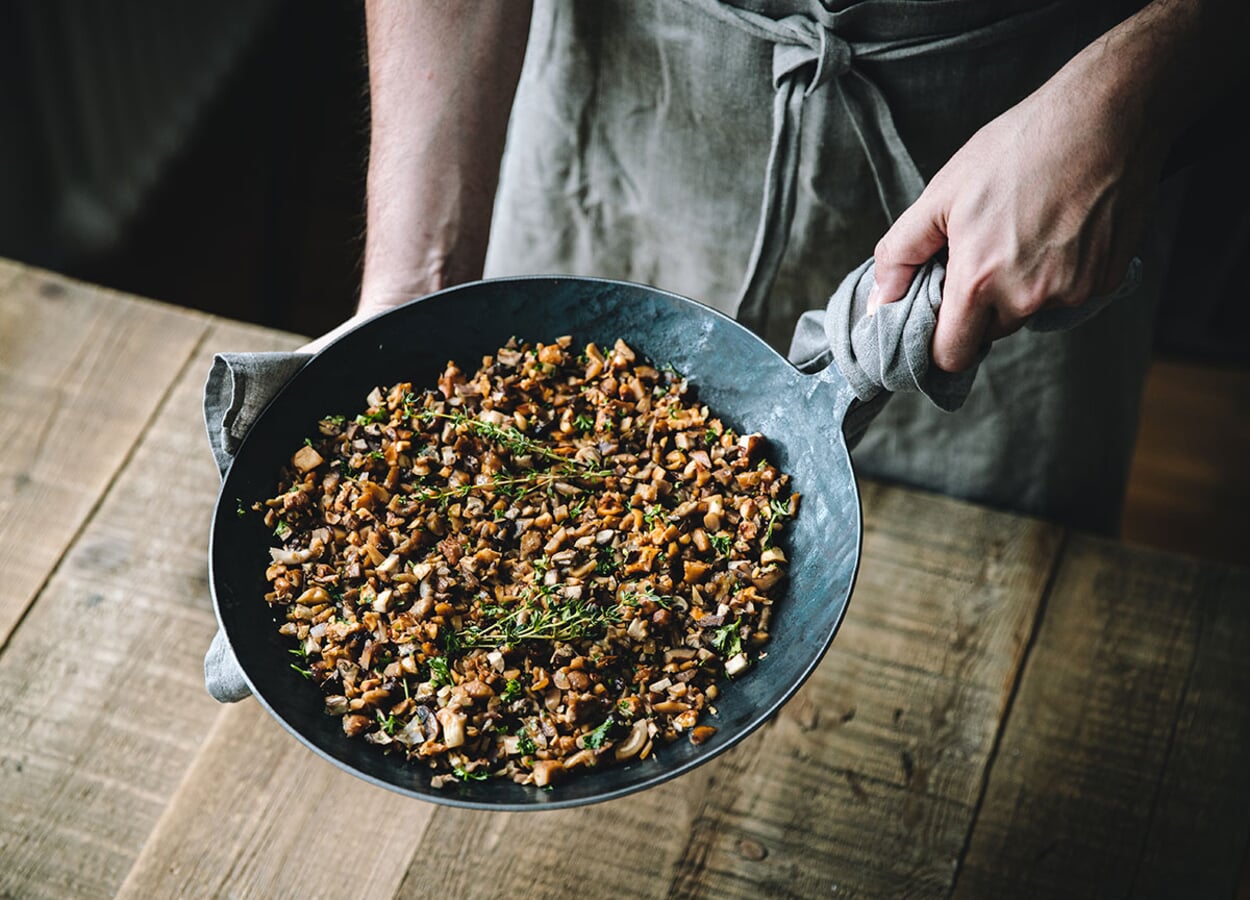Pans
Tips
Pans for every purpose. A little usage guide
The success of a dish depends largely on how it is prepared. This goes on and on, because whether the preparation is successful also depends on the choice of pan or frying pan you use. A coated pan will never be able to be heated high enough to fry a steak to perfection (think of the dark, caramelized crust on the outside, which, in combination with the au point cooked inside, makes the dish so delicious) or to brown roast potatoes until just crispy. An iron pan is more suitable for these purposes, while a coated pan is more suitable for cooking delicate foods (fish, egg dishes). The situation is different if you are looking for a pan for sautéing or sautéing chopped vegetables and meat, as the shape of the appliance (and its weight) will soon become more important. If you want to master this technique - supported by plenty of butter or frying fat, which transfers the heat quickly (i.e. faster than air) to the food and thus ensures an even result without burning - we recommend a pan with a higher and slightly flared edge, such as our pan for sautéing. It is made of iron, can be brought to the required temperature and is not too heavy, so you can shake it well and keep all the ingredients moving in it. Below we would like to introduce you to some of the pan manufacturers we work with.
Turk iron pans. With more than 150 years of experience
Open-die hot-forged pans have been produced at Turk in Westphalia since 1857. In the past, such pans were also referred to as "hand-forged" - although this term can be misunderstood, as modern technical aids are used nonetheless. The ladle blank is forged out under the hammer, but then punched out using a press and finished again with the hammer. Any unevenness is evened out with a laser. Both machines - punch and laser - can leave fine marks on the rim and handle of the ladle. Today, the main customer for the pans is the catering industry, because skilled chefs appreciate the excellent frying properties of iron pans. The company, now run by the fifth generation of the family, was founded when the trained blacksmith Karl Albert Turk set up a hammer mill in his father-in-law's mill.
Enamel pans from Riess in Lower Austria
Enameled iron reacts only slightly slower to temperature changes than untreated iron and can be heated just as high. However, pans made of enameled iron are easier to handle because they do not need to be baked and do not develop the "frying layer" that is common for untreated iron pans (which can sometimes affect the taste). The enamel coating also prevents the food from sticking. However, you should make sure that you do not bring your enameled pan into contact with cold water immediately after use when it is still hot - the resulting tension could cause damage to the enamel layer. Simply wipe out for cleaning.
Pans with copper core from Falk Culinair
Copper and induction do not normally go well together. There is a simple reason for this: the precious metal is not magnetic. A cast-iron plate can be used as a makeshift adapter, but this impairs the outstanding heat conductivity for which copper is so valued by professional chefs (as the heat supply can no longer be regulated 1:1 and without a time delay). Or you can do as the innovative Belgian manufacturer Falk has done, developing this cookware with a two-millimeter-thick layer of copper inside the core of the pots and pans. All the pots and pans in the range have a three-layer structure; the aforementioned copper core is surrounded on both sides by stainless steel and the easy-care satin-finish exterior is ferromagnetic. This means that the cookware can also be used on induction hobs without any restrictions in terms of heat distribution and enables energy-saving cooking.





